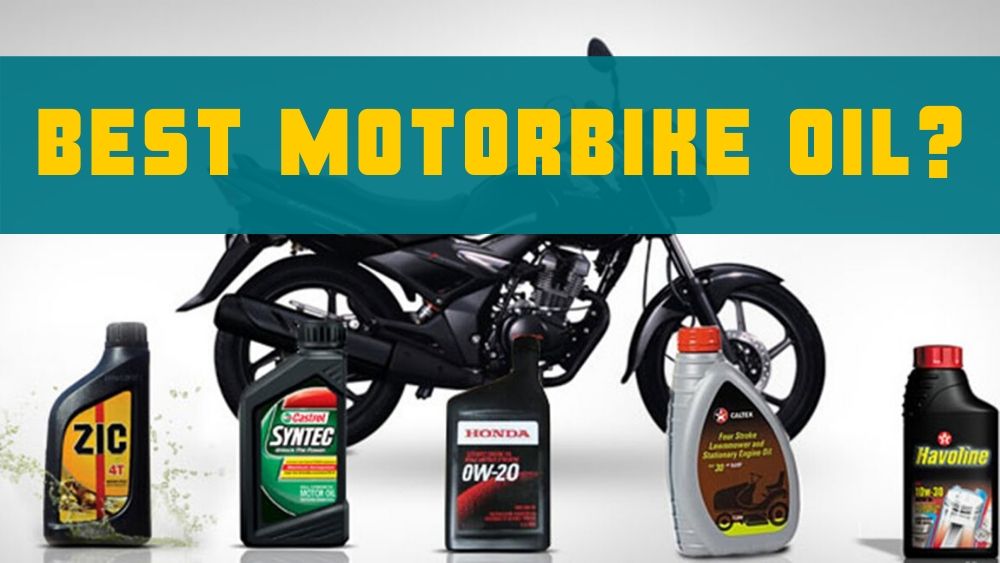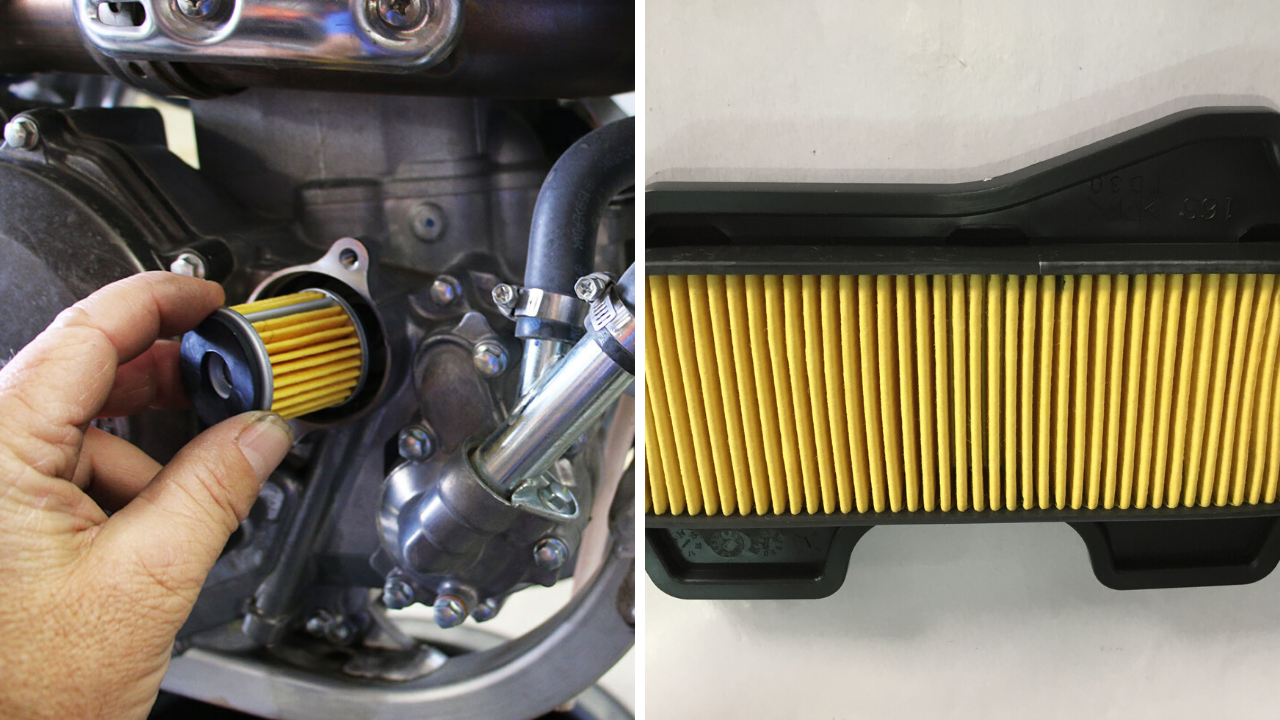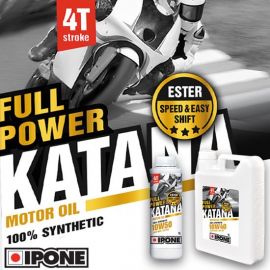
Choosing the correct motorbike oil
The internet is full of recommendations for the "best motorbike oil". The reality is that people try a brand, the motorbike doesn't break down. They are then satisfied with the oil/brand, and so they recommend it. Most people do not have experience with multiple brands, multiple motorbike models or different lengths of service intervals. It is blind recommendations with no real data behind it.
Unfortunately, the data doesn't exist and there is no way to prove the differences between the different motorcycle oil brands, or the long/short term effects of changing the service interval.
Whilst I don't claim to be a mechanic, nor a motorbike expert, I do have experience in running the service intervals and choosing the brands for www.TigitMotorbikes.com where our fleet of 400+ motorcycles are doing thousands upon thousands of kilometres every day.
Follow the service manual
The boring answer to the question of "what oil should I use" and "how often should I change it", can be answered in your service manual. It should be noted, that service manuals frequency on maintenance intervals can depend on the model of the motorbike.
For example, a road motorbike where a buyer is likely to be questioning the service intervals in terms of KM is likely to have a service manual that is pushing the MAXIMUM length of time for an oil change. This is part of the sales pitch of the manufacturer, to have long service intervals.
However, a KTM offroad motorbike for example generally will have short recommendations in terms of service intervals. Primarily they have to cater to high-performance drivers that are pushing the motorbike far harder than the average joe, and they tend to be making money on the regular service intervals on replacement parts.
Considering your motorbike model and what it is designed for, alongside your own driving style is helpful for determining if you should follow the service manual to exact numbers, or if you should be breaking the rules a little.
In summary, the service manual is there to help you, but there is no exact schedule or motorbike oil brand to follow.
Is there really a difference in oil brands?
There probably is, but I have not figured it out. From my perspective running a motorbike rental company, the oil brand is mostly irrelevant. In terms of Vietnam, I will say that Havoline caused our engines to fail regularly. This wasn't over time, they were just failing, and failing rapidly. This was a fairly simple puzzle to solve and we quickly switched oil brands to Motul.
The switch to Motul successfully resolved the regular engine problems.
Honda in Vietnam use Repsol, and our clients are instructed to do regular oil changes. Which means our motorbikes were getting a mix of Repsol and Motul.
We have since switched to Ipone for logistical reasons, and again, no noticeable problems.
Through the years I have tested various brands such as Top One, again I personally can't see any difference in the oil or the quality between them.
Understanding the numbers on an oil bottle
Most, if not all oil in Vietnam for normal motorbikes is 10W-40.
The "W" stands for winter and determines the lowest temperature that the oil can run at.
The 40 stands for its viscosity limit at 100°C.
A 10W-40 bottle of oil will be thinner than a 10W-50 bottle of oil.
Some high-performance motorbikes require 10W-50. This can be hard to get hold of in Vietnam, but in our opinion, it is worth sourcing the correct oil.
What you should know, is that when you go into a mechanic shop in Vietnam, they will be putting 10W-40 oil into the motorbike. If your motorbike has something different then buy the correct oil and don't use mechanic shops.
How about Mineral / Semi-Synthetic and fully Synthetic
The concept of mineral to synthetic is basically the amount of scientific manipulation that goes into the oil to raise the quality. Normal mineral oil is cheaper but it doesn't absorb as much material before becoming old, and I believe it has low-temperature variations. In other words, if the motorbike runs hot, the oil may not be good enough to deal with it.
Semi-Synthetic is supposed to be the middle quality.
Fully Synthetic is supposed to be the top of the line oil for a given brand. The oil should last a long time and it is the best oil that the company is managing to produce.
What does this really really mean?
What it means to the consumer is a scale of quality within the brand's product range. Some companies won't use terminology such as Semi-Synthetic, they will just call everything fully synthetic and then throw in some other buzz words to stand out the top of the range product from the middle product.
For example, Ipone has Fully Synthetic and Fully Synthetic Katana.
This may as well be called Semi-Synthetic and Fully Synthetic. It justs means "middle quality" and "highest quality".
Most motorbike manuals don't really specify which kind of oil you should be using, so here is a benchmark to follow that has served Tigit Motorbikes well.
- 1-3,000km oil change intervals and you should be using Semi-Synthetic. (or cheap oil)
- 5-10,000km oil change intervals and you should be using fully-Synthetic. (expensive oil)
Anything beyond this level of complexity is just marketing and buzz words.
Frequency of oil change service intervals vs long service intervals
In Vietnam, most locally made motorcycles do not have oil filters. Even if they do, such as the Yamaha Exciter, mechanics never change them. As a result, the manufacturers of Honda and Yamaha recommend regular service intervals of 1-3000km. It isn't documented in the manual, and different service centers will suggest different numbers.
The idea is to have very regular service intervals with very cheap oil. The oil being used is around $6.
These locally made motorbikes are reliable and incredibly well made. However, they are not the same quality as large capacity motorbikes found overseas. These little scooters burn through oil at an alarming rate meaning that with every KM that you drive, the oil level is dropping. Drive above 3000km and you won't have any oil left, regardless of the original quality of the bottle that you bought.
For this reason, there is no point in putting expensive fully synthetic oil into the motorbike. The oil will be burnt through before you get to use the long-life properties that the expensive oil is providing.
If you do have a motorbike that is large capacity and following the trends of the western world, then it is worth looking at the service manual. Low-quality brands such as Royal Enfield will suggest 5,000km intervals, whereas high-quality brands such as Honda sometimes suggest 10,000km.
It also depends on the model of the motorbike and its life's purpose. Is it a bomb-proof long life Honda CRF 250L with 10,000km service intervals, or a Honda CRF 250R (motocross) with a bomb of an engine requiring service intervals within hours.
Some bikes are optimized for low performance, long life, and low service intervals.
Some bikes are optimized for high performance, short life, and regular service intervals.
Is it worth investing in expensive oil?
If you have a motorbike with no oil filter, then the manufacturer has designed this motorbike under the concept of short and regular changes. The oil will naturally be burnt over time and there is no point in buying expensive oil. Keep to the cheap and cheerful semi-synthetic oil. It should be noted just because you are using cheap oil doesn't mean that it is bad for the motorbike. The regular oil changes will be keeping the motorbike running fresh and perhaps more consistently fresh than running high-quality oil over long service intervals. To put this in perspective, when Tigit purchases a model that isn't successfully running to the service manual (Royal Enfield Himalayan). Our strategy is to lower the quality of the oil, but raise the service intervals.
If you have a motorbike suggesting 5-10,000km oil changes then it is worth buying the fully synthetic oil. With every oil change, remember to change the oil filter with it.
If you are lazy and you can't be bothered to service the motorbike properly or buy oil filters and air filters. Then the next best thing is regular 3,000km oil changes with cheap and cheerful oil.
How about oil filters and air filters?
Most manuals will recommend both an Oil filter change and an Airfilter change somewhere between 5,000km and 10,000km.
1. Changing the oil filter removes debris in the oil.
2. Changing the air filter improves motorbike performance and helps prevent debris coming in through the air intake.
If you change either the oil filter or air filter, you are already ahead of most motorcycle owners who never change these parts on the motorbike.
If you are a casual motorbike user and your service manual is recommending oil changes every 10,000km. Then it is easy and convenient to simply change the oil, the oil filter and the air filter every 10,000km.
A nice easy round number that can be followed and hopefully not forgotten!
My opinion on air filters and oil filters
From our experience at TigitMotorbikes I believe debris coming in through the air filter is one of biggest causes of engine related failures within the company. It is very rare for mechanics in Vietnam to change air filters and it is common to see mud splattered filters countrywide. This is a direct air intake to the engine which if left dirty, can allow large debris to enter the engine and cause it to fail.
We recommend not worrying about "regular oil changes". But instead, worry about consistently changing the air filter and oil filter with the oil change. If this means extending the length of time between the service intervals to a nice round number such as 10,000km, then it is worth doing.
Conclusion
According to the consumer, the oil they last bought is "the best oil". There is no magical brand that is better than all the others. However, at Chrunix our recommended magical brand is Ipone. Why? Because it is the only brand with a good supply of different viscosities such as 10W-50.
1. Check your service manual for both the oil viscosity and the service interval lengths.
2. Change oil every 3,000km, every 5,000km or every 10,000km depending on your model of motorbike.
3. If you do every 10,000km remember to change both the air filter and oil filter.
4. If you change oil every 5-10,000km remember to regurarly check the oil level. The oil being "old" won't cause the motorbike to fail, but the oil "running out" will!



























Log In